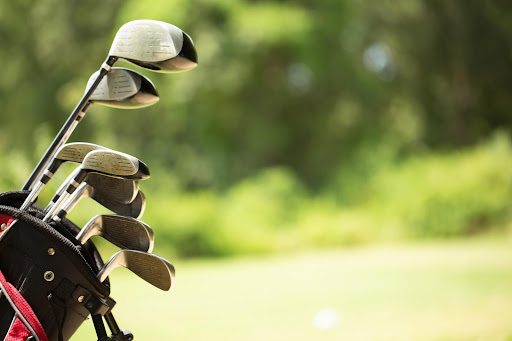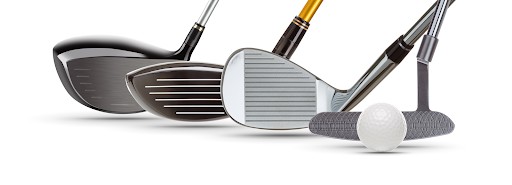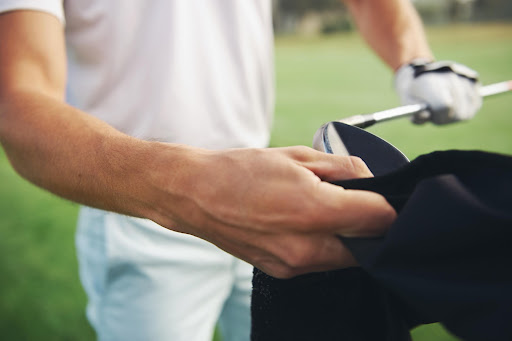Change your clubs – Frequency

Estimated reading time: 5 minutes
As golfers, most of us are looking to play our best game and enjoy our time on the course. This will largely come down to the primary arsenal contained within our golf bag—our golf clubs.
The draw of buying new golf equipment can certainly be tempting, but how do you know when is the right time to change your golf clubs?
How long should golf clubs last?
Golf clubs are extremely durable products, and if looked after, will last a long time. However, through wear and tear, they may suffer defects that will impact their performance.
How often you play and practice will be a massive factor, as opposed to time passage in general.
Professional golfers may go through multiple sets of clubs per year, as they are playing virtually every day. However, for the average club golfer, who may play a couple of times a week, replacing golf clubs this often would be overkill (and let’s face it, hugely expensive).
You should be able to get at least 300 rounds of golf out of a set of irons before they need replacing. For most golfers, this could be anything between five to ten years, depending on your frequency of play.
The key thing to do is monitor their performance, and condition, over time and then make a decision as to whether you need to replace them.
Do all golf clubs last the same amount of time?

Change your clubs – Frequency
In short, the answer is no.
Drivers and woods have a much shorter life expectancy (perhaps two to seven years, depending on how often you use them and how hard you hit the ball).
As drivers and woods are designed for more powerful shots, they will inevitably take more punishment than other clubs in your bag. Drivers are also primarily made from titanium, whereas other clubs are made from stainless steel or graphite, so they will behave differently upon impact with the golf ball.
Similarly, your putter could potentially last a lot longer than other clubs, as it is only used for gentle shots on or around the green.
Signs you need to replace your golf clubs
Changes in your performance
As the saying goes, a bad workman blames his tools. But with regards to golf clubs, they can legitimately impact how well you play on the course. Once the grooves start to wear away, you will get less spin. This can cause shots to fly higher than anticipated, or not carry as far. Or, you may find lower shots do not go where you intend them to.
Changes in your swing
A golfer’s swing will change throughout their lifetime, either due to age and/or physical ability. As your swing improves, and you become a better golfer, you may find that you need to upgrade your golf clubs in order to further benefit your game. Let’s face it; Rory McIlroy isn’t using the same clubs that he did when he was a teenager.
Changes in technology
Golf technology is constantly evolving. So, for every year you keep your old golf clubs in the bag, you are missing out on extra yardage and more forgiveness. Plus, as your game improves, you may benefit from newer designs of golf clubs, in order to make that step to the next level.
Changes in the condition of your golf clubs
You may also notice some variation in the shaft of your irons. For example, steel shafts tend to last longer than graphite. Gradually, graphite shafts can splinter, and eventually break. So best to check, and monitor, the condition of your shafts over time. Once they become damaged, it’s probably best to trade them in for a new set.
As a side note, it is also worth considering whether your entire set of clubs needs replacing, or whether regripping your golf clubs or replacing them with new shafts will suffice. Most of the time, once the club face has chips, scratches and/or dents, then it is time to think about getting a new set.
How can you make your golf clubs last longer?

Change your clubs – Frequency
The replacement cycle of your golf clubs is dependent upon how well you treat them. There are some basic things that you can do that will help increase their longevity, such as:
- Regular cleaning will help prevent the build-up of dirt in the grooves. This includes wiping them down after every shot, as well as before your next game.
- Keep your clubs dry—including after playing shots in wet conditions.
- Make sure they are stored in an appropriate place, and covered, to prevent damage from dust and dirt.
- Avoid hitting shots off rough surfaces that could potentially chip/damage your club face (this includes removing stones from bunkers—where possible).
- Invest in a high-quality, sturdy golf bag with separate compartments to avoid your clubs clinking against one another.
Iron covers certainly get a bad rep for being uncool—but they are a good way of keeping your club heads free of scuff marks and reduce the chance of wear and tear (maybe just don’t broadcast that you have bought some).
You can also get your golf clubs checked once a year as the loft and lie can change, which will directly impact their performance.
The bottom line is: if you look after your clubs, they will look after you.